Nestled in the heart of Thailand, a unique fish species has captured the attention of aquarium enthusiasts worldwide. The Red-Tailed Shark, scientifically known as Epalzeorhynchos bicolor, is a captivating creature that belongs to the Cyprinidae family, which also includes other popular aquarium fish like barbs and danios.
Table of Contents
Interestingly, despite its name, the Red-Tailed Shark is not a true shark but rather a freshwater fish that has earned its moniker due to its torpedo-shaped body and striking red tail. These fish are bottom-dwellers, often found scouring the substrate for food and defending their territory with great tenacity.
Historical records indicate that the Red-Tailed Shark was first described by Smith in 1931. Since then, it has become a staple in the aquarium trade, captivating hobbyists with its vibrant appearance and lively personality. In the wild, these fish inhabit the fast-flowing rivers and streams of Thailand, where they feed on algae, small invertebrates, and detritus.
One fascinating aspect of the Red-Tailed Shark is its behavioral patterns. These fish are known for their territorial nature, particularly towards other bottom-dwelling species. They are best kept in larger aquariums with plenty of hiding spots and a sandy or fine gravel substrate. When it comes to tank mates, it’s essential to choose species that occupy different levels of the aquarium to minimize aggression.
Fun fact: Did you know that the Red-Tailed Shark is not actually a shark at all? This is just one of the many quirks that make this fish so intriguing to aquarium enthusiasts.
When setting up a home for your Red-Tailed Shark, it’s crucial to understand their dietary preferences. These fish are omnivores, thriving on a varied diet that includes high-quality flake food, pellets, and occasional treats like frozen bloodworms or brine shrimp. Vegetables such as blanched spinach or lettuce can also be offered to supplement their diet and promote overall health.
According to a study published in the Journal of Applied Ichthyology, the Red-Tailed Shark exhibits a strong preference for benthic invertebrates, which comprise a significant portion of their natural diet. This information can be valuable when creating a balanced feeding regimen for your aquatic companion.
In the aquarium trade, the Red-Tailed Shark is known by several alternative names, including Red-Tailed Black Shark, Redtail Shark, and Redtail Sharkminnow. These names often vary depending on the region and the supplier, but they all refer to the same captivating species.
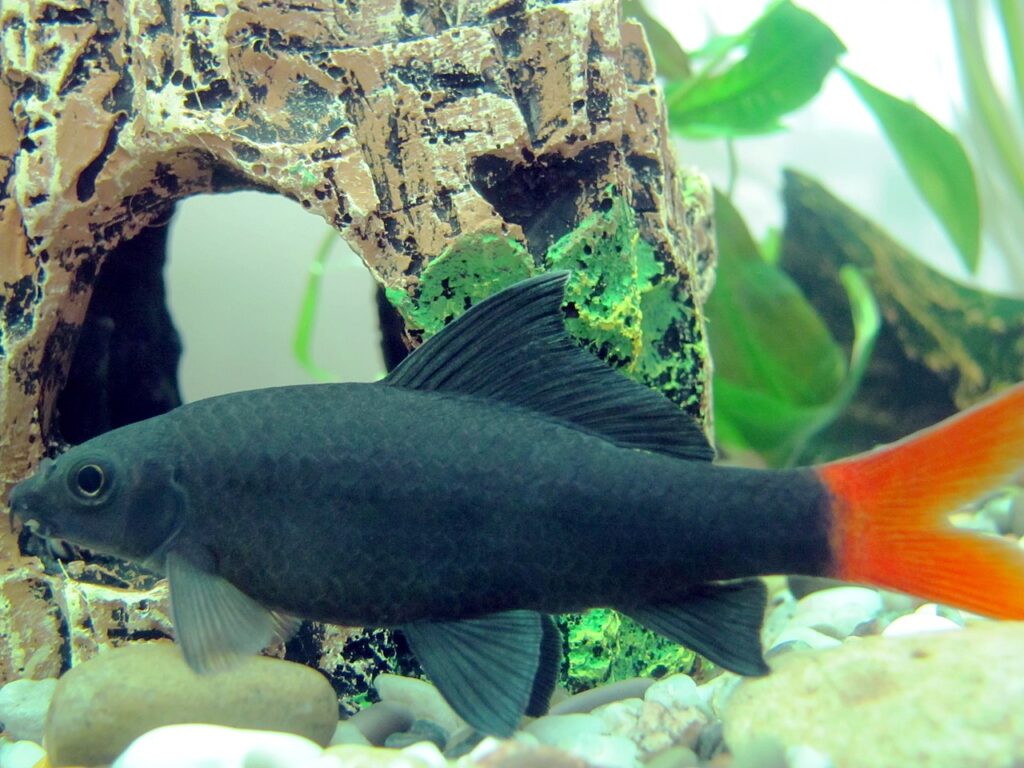
Key Information
The Red-Tailed Shark (Epalzeorhynchos bicolor) is a striking freshwater fish that captivates aquarium enthusiasts with its vibrant coloration. The body of the Red-Tailed Shark is predominantly black, with a shimmering iridescence that gives it a subtle blue or purple hue. However, the true star of the show is the fish’s tail, which boasts a brilliant shade of red that contrasts beautifully against its dark body. This distinctive color pattern makes the Red-Tailed Shark an eye-catching addition to any aquarium.
| Family | Cyprinidae |
| Origin | Thailand |
| Price | $5 – $15 |
| Common Names | Red-Tailed Shark, Red-Tailed Black Shark, Redtail Shark, Redtail Sharkminnow |
| Variants | None |
| Ideal Tank Size | 55 gallons (208 liters) or larger |
| Water Parameters | Temperature: 72-79°F (22-26°C), pH: 6.8-7.5, Hardness: 5-15 dGH |
| Lifespan | 5-8 years |
| Full Size | 4-6 inches (10-15 cm) |
| Natural Environment | Fast-flowing rivers and streams in Thailand |
| Behavior | Territorial, especially towards other bottom-dwelling fish |
| Habitat Preference | Bottom-dweller, prefers sandy or fine gravel substrate with hiding spots |
| Aquarium Decoration | Driftwood, rocks, and plants that provide hiding spots and territorial boundaries |
| Ideal Tank Mates | Fast-swimming, peaceful fish that occupy the upper and middle levels of the aquarium, such as Barbs, Rainbowfish, and Danios |
| Fish to Avoid | Other bottom-dwelling fish, particularly those with similar coloration or territorial tendencies, such as other Red-Tailed Sharks or Cichlids |
| Best Foods/Diet | Omnivorous; high-quality flake food, pellets, frozen bloodworms, brine shrimp, and blanched vegetables (spinach, lettuce) |
| Disease | Susceptible to common freshwater fish diseases if water quality is poor |
| Sex-Switch | Cannot switch sex |
| Gender Differences | No visible external differences between males and females |
| Care Level | Moderate |
| Breeding Level | Difficult; rarely achieved in captivity due to territorial nature |
Idea Tank Mates
When choosing tank mates for your Red-Tailed Shark, it’s essential to consider their temperament, size, and swimming habits. As Red-Tailed Sharks are known for their territorial nature, particularly towards other bottom-dwelling fish, it’s crucial to select tank mates that can coexist peacefully with these feisty swimmers.
Ideal tank mates for Red-Tailed Sharks should be fast-swimming, peaceful species that occupy the upper and middle levels of the aquarium. These fish should be able to hold their own against the Red-Tailed Shark’s territorial behavior while not competing for the same space or resources.
Here are 15 ideal tank mates for Red-Tailed Sharks, along with explanations of why they are compatible:
1. Tiger Barbs (Puntigrus tetrazona)
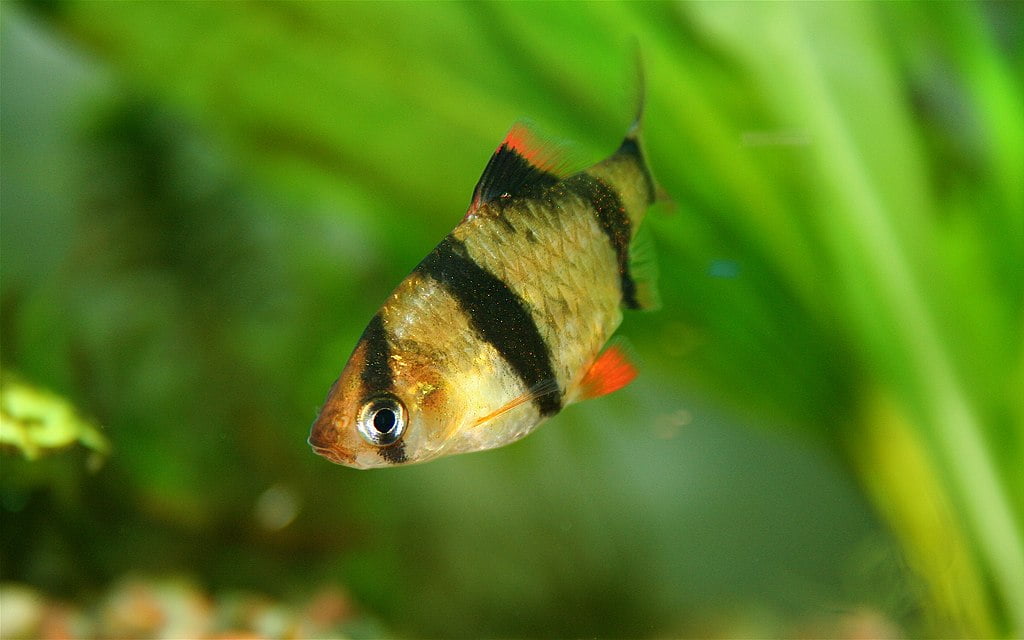
Tiger Barbs are active, fast-swimming fish that occupy the upper levels of the aquarium. Their quick movements and schooling behavior make them less likely to be targeted by the Red-Tailed Shark’s territorial aggression.
2. Odessa Barbs (Pethia padamya)
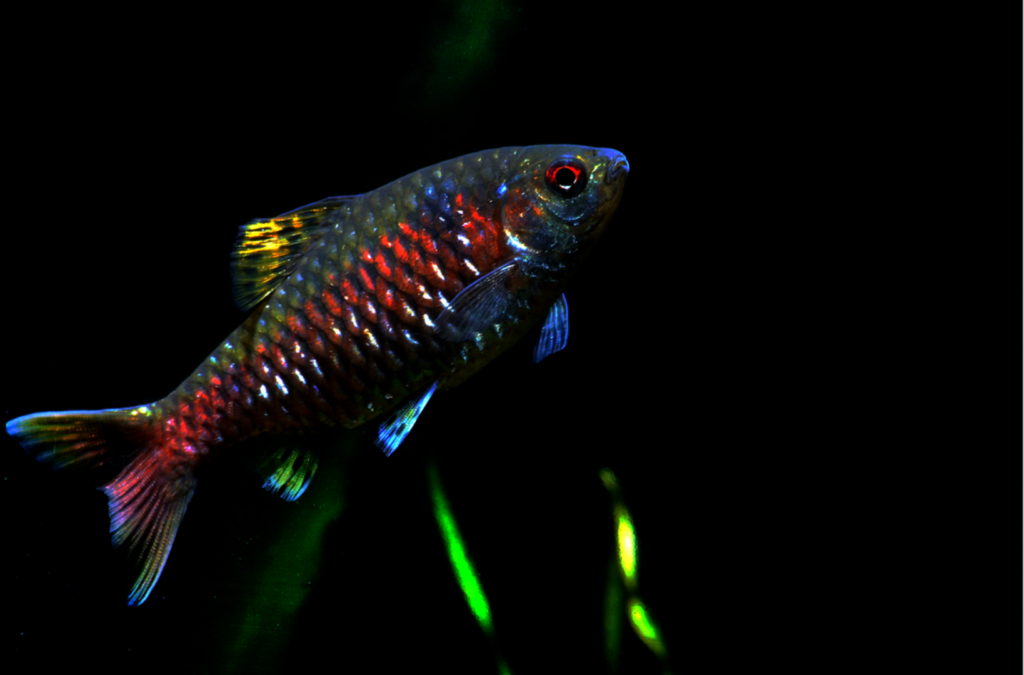
Like Tiger Barbs, Odessa Barbs are fast swimmers that prefer the upper parts of the aquarium. Their peaceful nature and vibrant coloration make them an attractive addition to a Red-Tailed Shark tank.
3. Cherry Barbs (Puntius titteya)
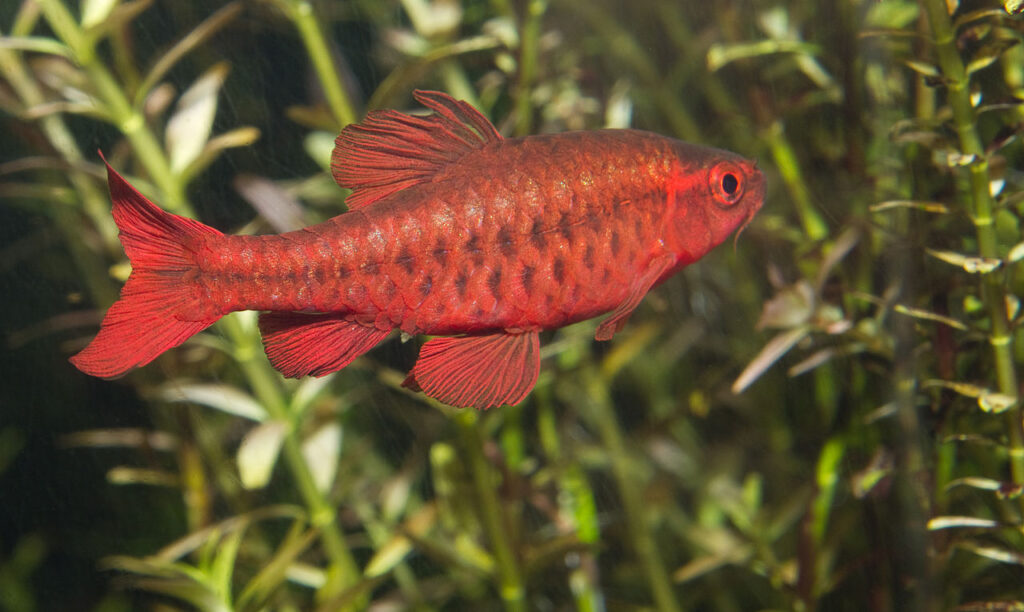
Cherry Barbs are small, peaceful fish that thrive in planted aquariums. Their preference for the middle and upper levels of the tank minimizes interactions with the Red-Tailed Shark, reducing the chances of aggression.
4. Zebra Danios (Danio rerio)
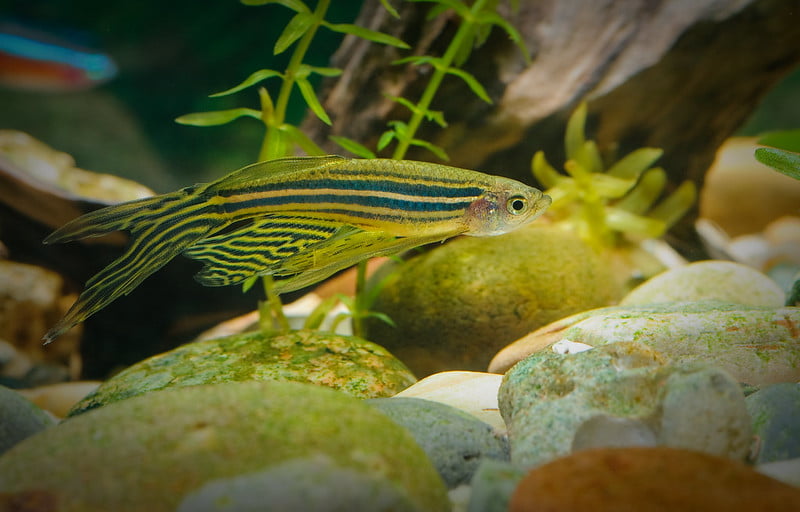
Zebra Danios are hardy, active fish that swim in the upper levels of the aquarium. Their fast swimming speed and schooling behavior make them less likely to be targeted by the Red-Tailed Shark.
5. Pearl Danios (Danio albolineatus)
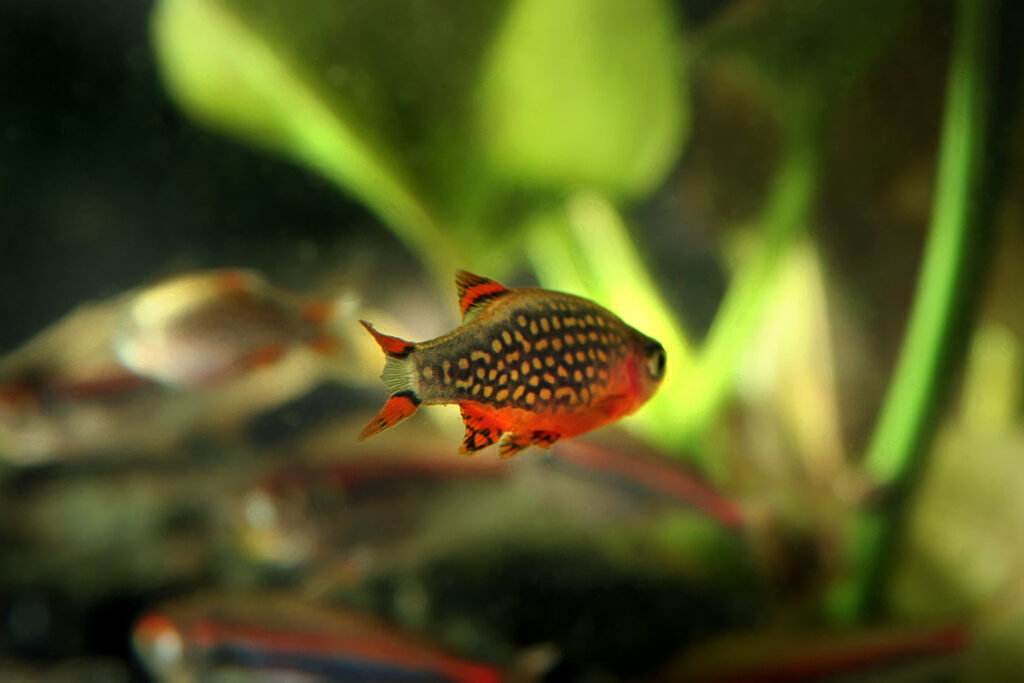
Pearl Danios are peaceful, active fish that prefer the upper parts of the aquarium. Their iridescent scales and fast swimming habits make them an attractive and compatible tank mate for Red-Tailed Sharks.
6. Rainbowfish (Melanotaeniidae family)
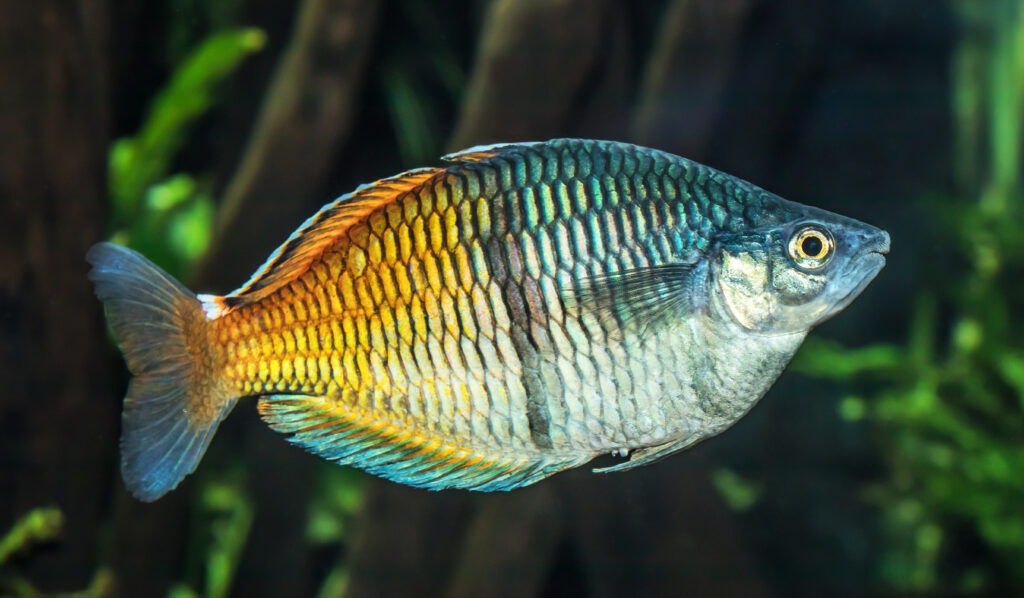
Rainbowfish are colorful, active fish that occupy the upper levels of the aquarium. Their peaceful nature and fast swimming speed make them well-suited for life alongside a Red-Tailed Shark.
7. Boeseman’s Rainbowfish (Melanotaenia boesemani)
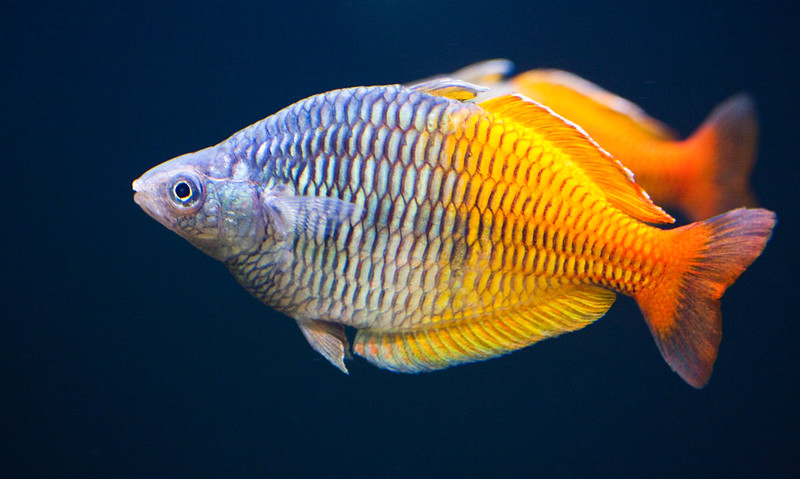
Boeseman’s Rainbowfish are a specific species of Rainbowfish known for their vibrant coloration and peaceful temperament. They prefer the upper levels of the tank, reducing the likelihood of conflicts with the Red-Tailed Shark.
8. Neon Tetras (Paracheirodon innesi)
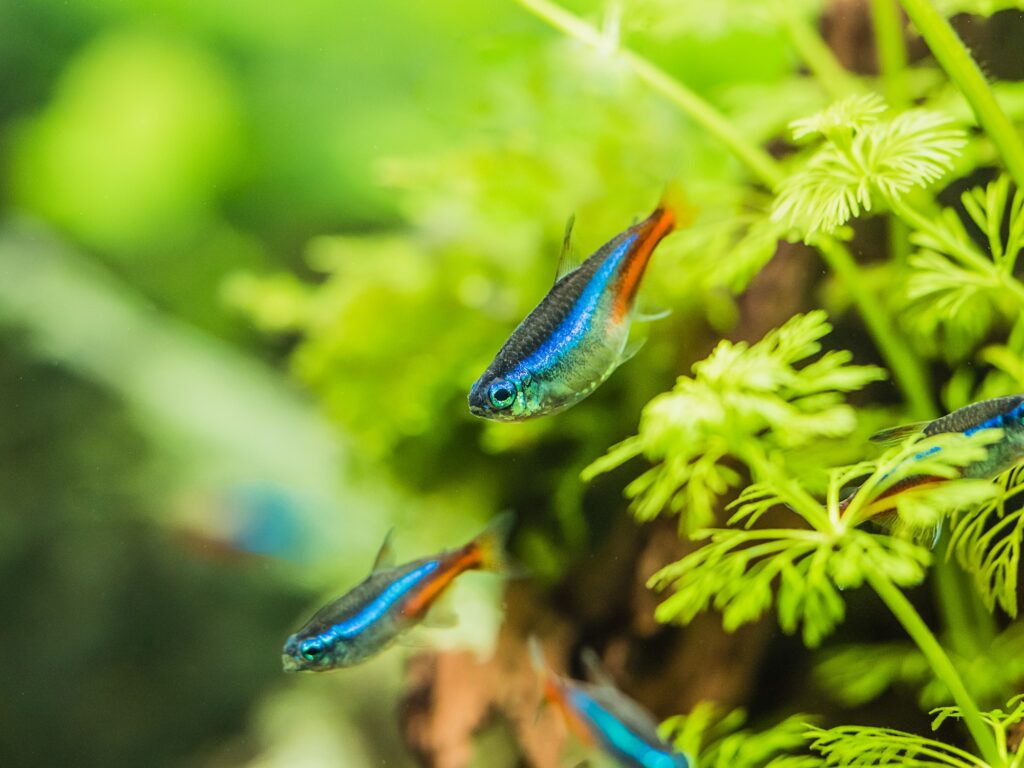
Neon Tetras are small, peaceful fish that swim in the middle and upper levels of the aquarium. Their schooling behavior and bright coloration make them an attractive addition to a Red-Tailed Shark tank.
9. Cardinal Tetras (Paracheirodon axelrodi)
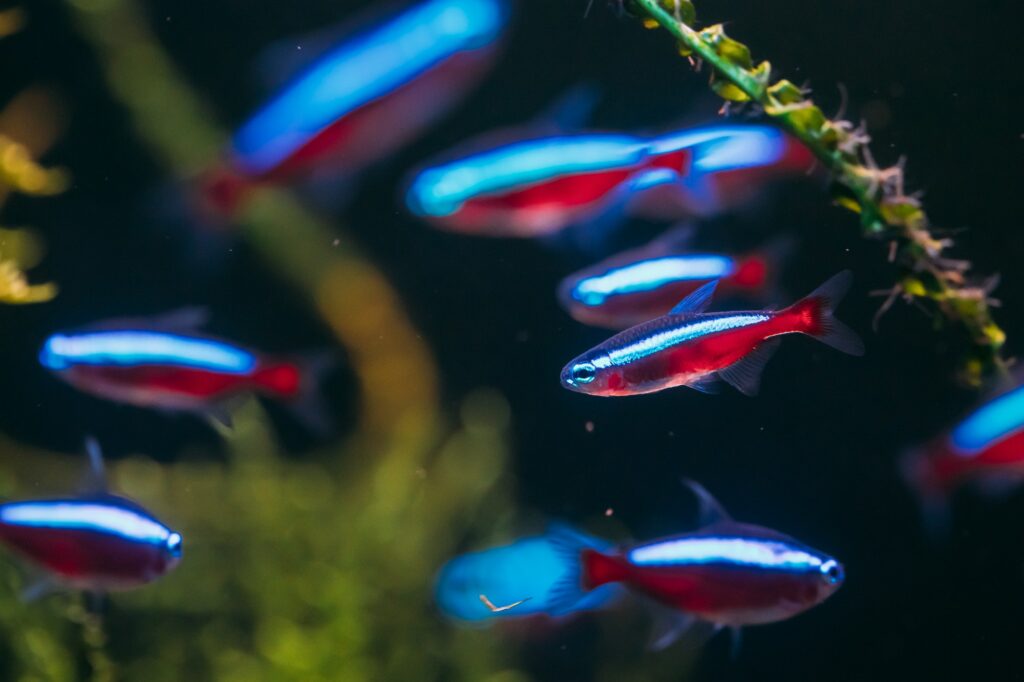
Similar to Neon Tetras, Cardinal Tetras are peaceful schooling fish that occupy the middle and upper parts of the aquarium. Their striking red and blue coloration adds visual interest to the tank without provoking the Red-Tailed Shark.
10. Black Skirt Tetras (Gymnocorymbus ternetzi)
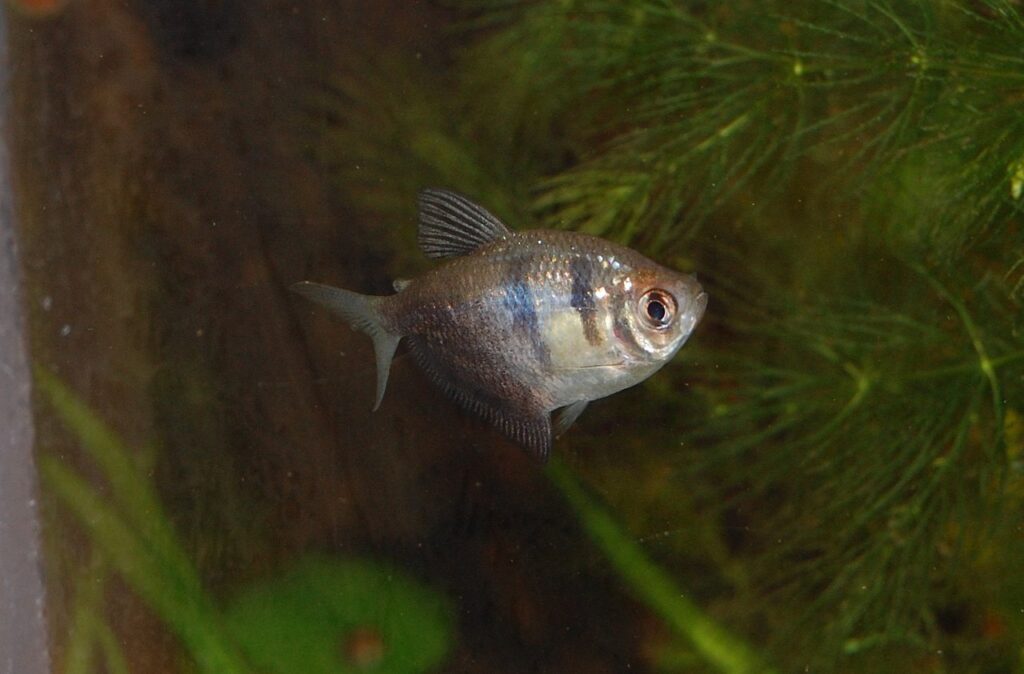
Black Skirt Tetras are hardy, peaceful fish that swim in the middle levels of the aquarium. Their dark coloration and active swimming habits make them a good match for Red-Tailed Sharks.
11. Mollies (Poecilia sphenops)
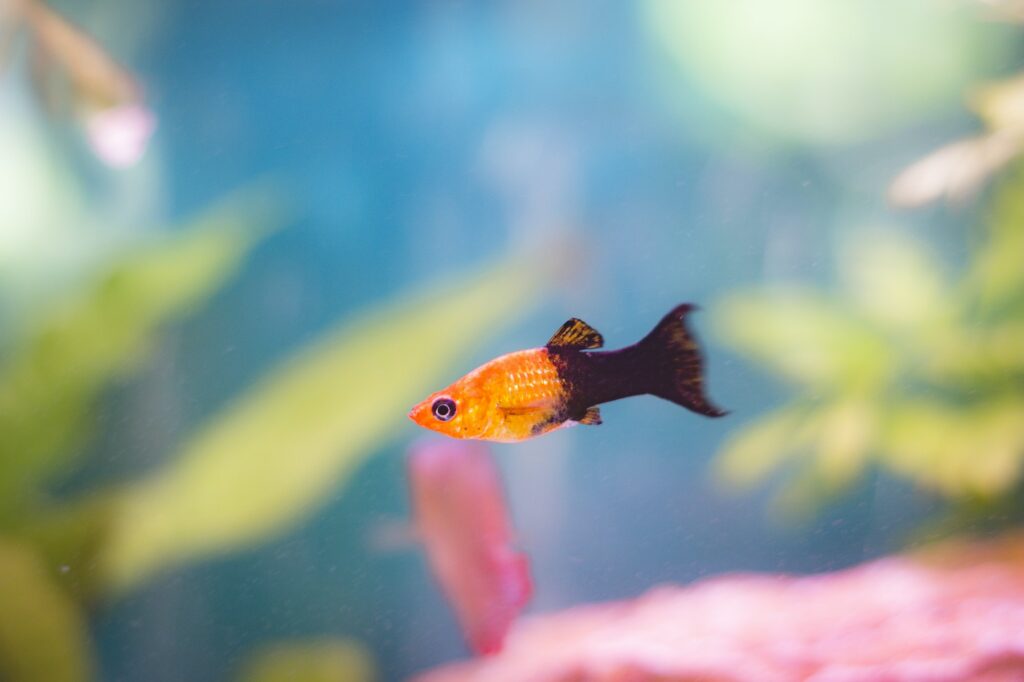
Mollies are live-bearing fish that come in a variety of colors and patterns. They prefer the upper levels of the aquarium and are generally peaceful, making them suitable tank mates for Red-Tailed Sharks.
12. Platies (Xiphophorus maculatus)
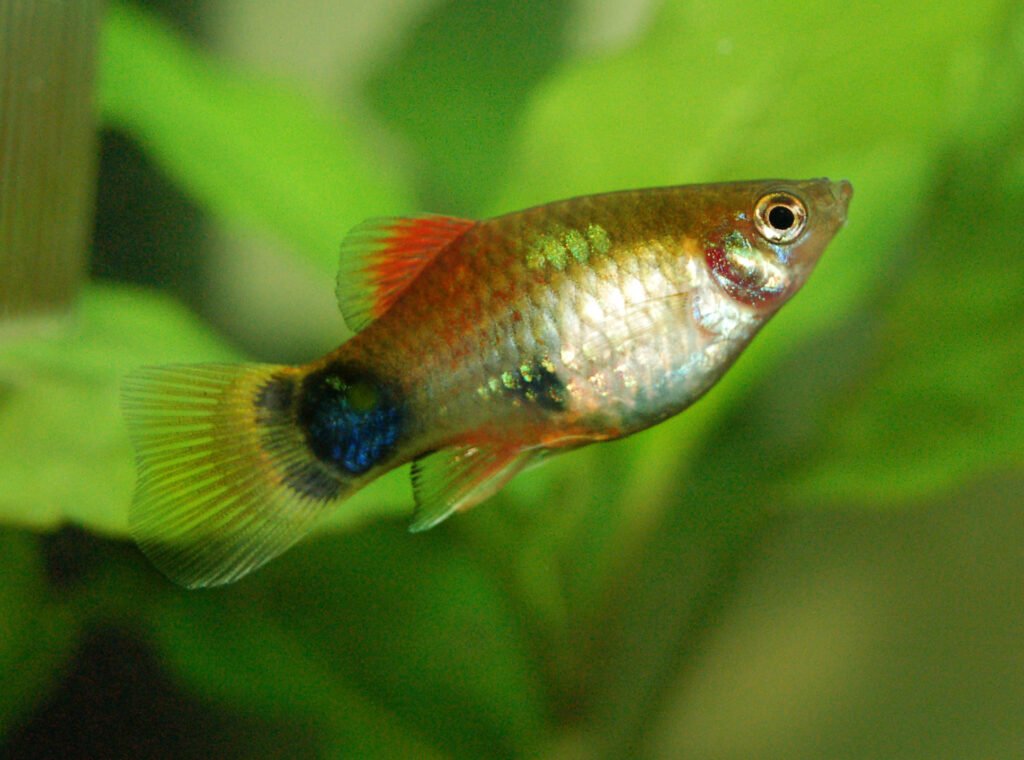
Platies are another live-bearing species that thrive in the upper parts of the aquarium. Their bright colors and peaceful nature make them compatible with Red-Tailed Sharks.
13. Swordtails (Xiphophorus hellerii)
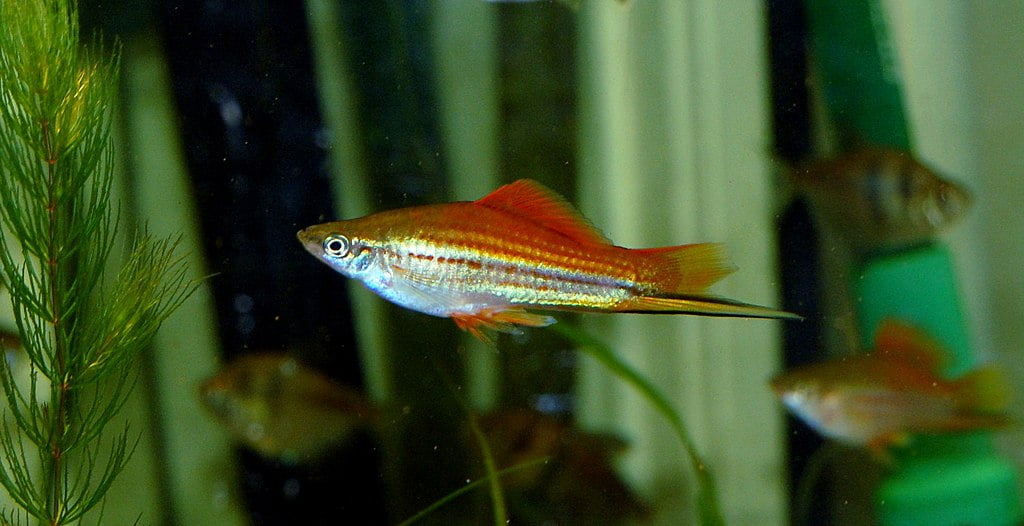
Swordtails are live-bearing fish known for their long, sword-like tail extensions. They occupy the upper levels of the tank and are generally peaceful, making them a good fit for a Red-Tailed Shark aquarium.
14. Guppies (Poecilia reticulata)
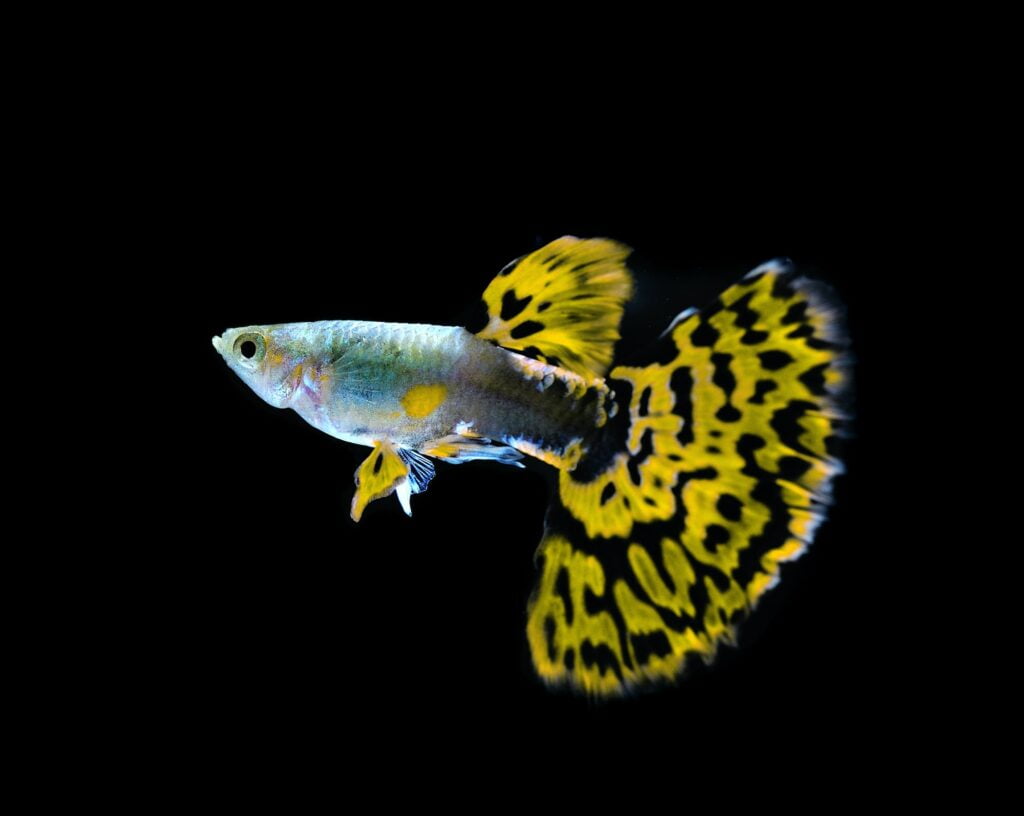
Guppies are small, colorful live-bearing fish that prefer the upper parts of the aquarium. Their peaceful nature and fast swimming habits make them compatible with Red-Tailed Sharks.
15. Siamese Algae Eaters (Crossocheilus oblongus)
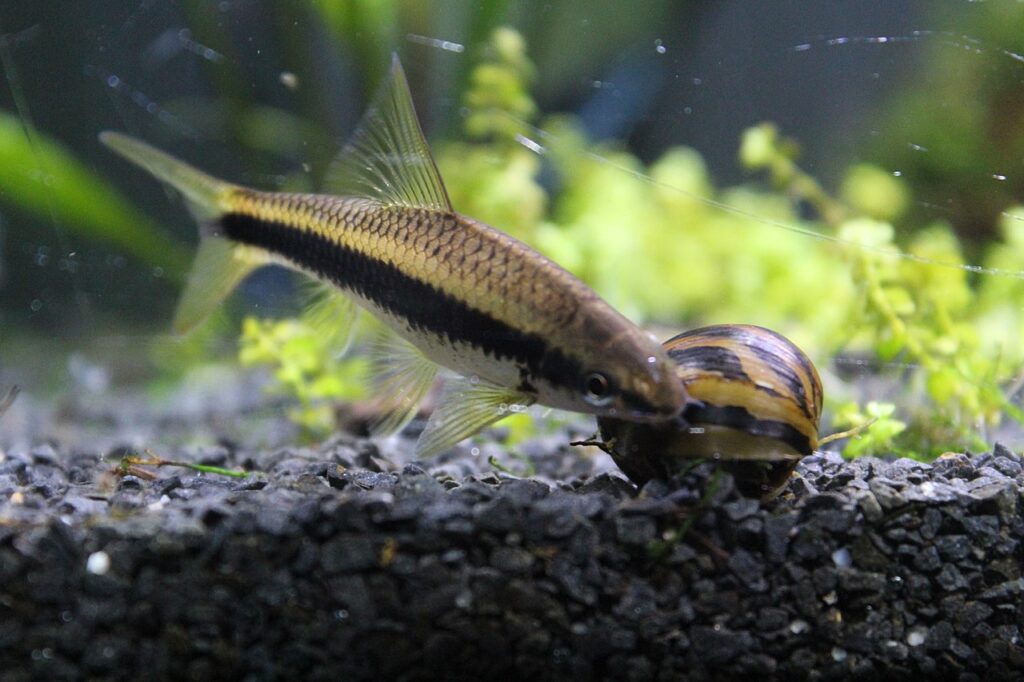
Siamese Algae Eaters are peaceful bottom-dwellers that help control algae growth in the aquarium. While they occupy the same level as the Red-Tailed Shark, their non-territorial nature and algae-eating habits make them less likely to be targeted by aggression.
FAQs
How big do Red-Tailed Sharks get?
Red-Tailed Sharks typically grow to be 4-6 inches (10-15 cm) in length when fully mature. This size makes them a suitable choice for medium to large aquariums, as they need ample swimming space and room to establish their territories.
Are Red-Tailed Sharks aggressive?
Red-Tailed Sharks are known for their territorial behavior, particularly towards other bottom-dwelling fish. They can become aggressive when defending their space, especially if the aquarium is too small or lacks proper hiding spots and territorial boundaries. However, with the right tank setup and compatible tank mates, their aggression can be minimized.
What should I feed my Red-Tailed Shark?
Red-Tailed Sharks are omnivores, which means they require a varied diet to thrive. Offer them a combination of high-quality flake food, pellets, frozen bloodworms, brine shrimp, and blanched vegetables like spinach or lettuce. Providing a diverse diet ensures that your Red-Tailed Shark receives all the necessary nutrients for optimal health.
How often should I feed my Red-Tailed Shark?
It’s best to feed your Red-Tailed Shark small amounts of food 2-3 times a day. This feeding schedule mimics their natural eating habits and helps prevent overfeeding, which can lead to health issues and poor water quality. Be sure to remove any uneaten food after a few minutes to maintain a clean aquarium environment.
Can I keep multiple Red-Tailed Sharks together?
While it may be tempting to keep multiple Red-Tailed Sharks in the same aquarium, it’s generally not recommended. These fish are highly territorial and will likely display aggression towards each other, leading to stress and potential injury. It’s best to keep only one Red-Tailed Shark per aquarium to ensure their well-being.
How can I tell if my Red-Tailed Shark is male or female?
Unfortunately, there are no reliable external characteristics to distinguish between male and female Red-Tailed Sharks. Both sexes look very similar, making it difficult to determine their gender without invasive methods. As a result, breeding Red-Tailed Sharks in captivity is quite challenging and rarely achieved.
Are Red-Tailed Sharks jumpers?
Yes, Red-Tailed Sharks are known to be skilled jumpers, especially when startled or stressed. To prevent your fish from jumping out of the aquarium, make sure to use a tight-fitting lid or hood that covers the entire tank. This precaution not only keeps your Red-Tailed Shark safe but also helps maintain proper water temperature and prevents evaporation.
How often should I perform water changes for my Red-Tailed Shark tank?
Regular water changes are essential for maintaining a healthy aquarium environment for your Red-Tailed Shark. Aim to perform a 10-15% water change every week, using a gravel vacuum to remove debris and waste from the substrate. Be sure to treat the new water with a suitable water conditioner to remove harmful chemicals before adding it to the tank.